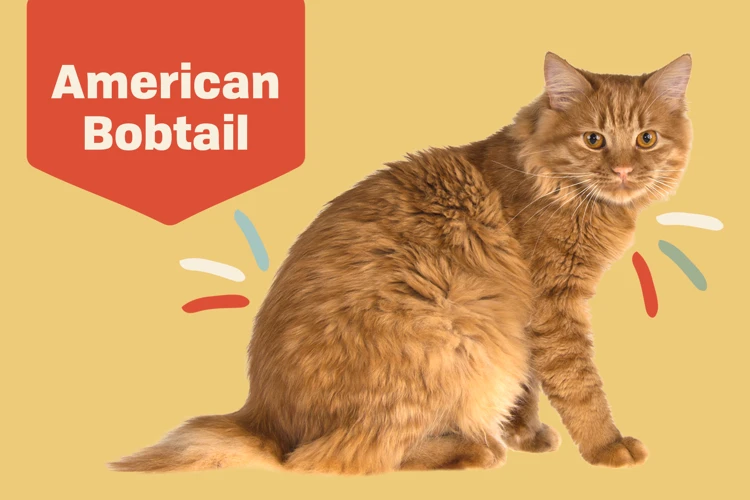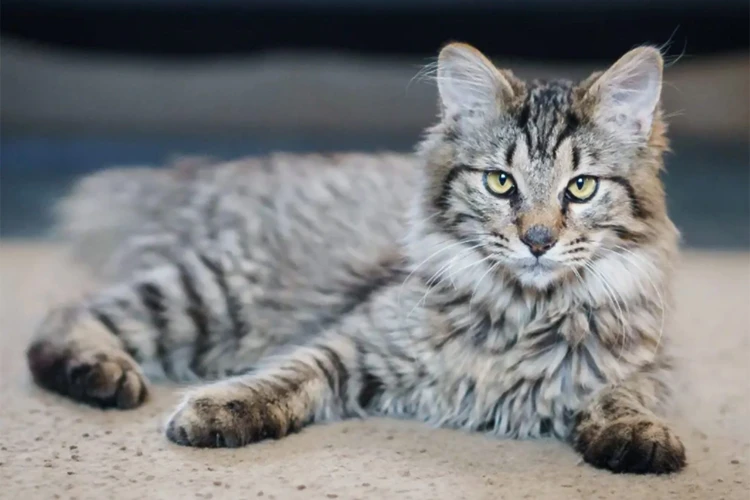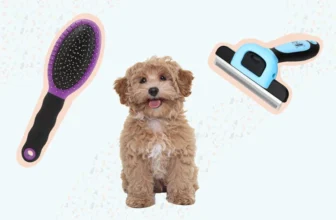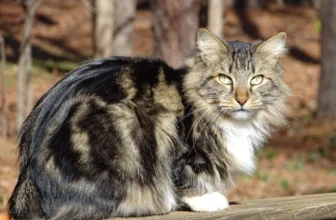As American Bobtail owners, we all want our furry friends to be healthy and happy. It can be frustrating and concerning when we notice our cats experiencing eye problems. Understanding their eye health is crucial for identifying common issues and learning how to handle them. While some problems can be treated at home, others require the attention of a veterinarian. In this article, we will dive into the world of American Bobtail eye health, discussing what to expect from their eyes, frequent issues, management, and daily care tips to keep their eyes healthy and shining bright. So, let’s explore the fascinating world of your cat’s eyesight.
Understanding American Bobtail Eye Health

The American Bobtail is a beautiful breed that’s known for its distinctive bobbed tail and large, expressive eyes. While Bobtail cats generally enjoy good health, like all animals, they can be prone to certain health issues. One area of concern for American Bobtail owners is their feline companion’s eye health. Understanding the unique characteristics of your cat’s eyes, as well as what to look for when monitoring their eyesight, is crucial when it comes to keeping them happy and healthy. In this article, we’ll take a closer look at the signs of healthy eyes in American Bobtails, frequent eye issues to watch out for and how you can help your cat stay comfortable and healthy with tips from the vet and DIY remedies. By providing your cat with the right care, you can help minimize the risk of eye problems and keep those bright, beautiful eyes shining. To learn more about how to clean American Bobtail eyes, check out our article “American Bobtail Eye Cleaning: Tips and Tricks for Keeping Your Cat’s Eyes Healthy”.
What to Expect from Healthy Eyes
A cat’s eyes serve as an essential tool for their survival, and watching over the health of your American Bobtail’s eyes is integral to keeping them healthy and happy. Knowing what healthy eyes look like is the first step in detecting eye issues in your American Bobtail. Generally, healthy eyes have the following characteristics:
| Healthy Eyes | Unhealthy Eyes |
|---|---|
| Bright, clear, and alert | Dull or cloudy |
| Uniform shape and size | Asymmetrical shape or size |
| Moist | Excessively dry or moist |
| Free from redness or discharge | Red, inflamed or discharging liquids |
A healthy American Bobtail’s eyes will look bright and clear with no redness or discharge. The pupils should be of equal size and should react equally to light. There should be no clouding or fogging of the lens or any growths in the eyes.
It is important to observe your American Bobtail’s eyes regularly and look for any changes in their appearance. If your cat’s eyes start to appear abnormal or show any signs of discomfort, it is essential that you talk to your veterinarian for further advice. Being attentive to your American Bobtail’s eye health can prevent any future medical problems with their vision.
If you want to learn how to keep your American Bobtail’s eyes clean click here, and if you want to know more about preventing eye infections in American Bobtail kittens, click here.
Frequent Eye Issues for American Bobtails
It’s important to be aware of the most common eye issues that American Bobtails can face. This will help you catch any problems early on and get your furry friend the proper treatment they need.
Here are some frequent eye issues for American Bobtails:
| Eye Issue | Symptoms | Treatment |
|---|---|---|
| Conjunctivitis | Redness, swelling, discharge, crusty eyelids, tearing, squinting, and sensitivity to light | Treatment may involve a course of antibiotics or antiviral medications, and keeping the affected eye clean with a warm, damp cloth. |
| Cataracts | Cloudy or hazy appearance in the eye, difficulty seeing in dimmer light, and sensitivity to bright light | There may be surgery options available, but it’s best to catch them early to prevent growing. |
| Corneal Ulcers | Redness, discharge, frequent blinking, squinting, and watery eyes | Treatment will typically involve antiviral medication and regular reevaluation by a veterinarian. |
| Eye Trauma | Squinting, tearing, redness, or cloudy eye appearance. | Treatment will depend on the severity of the trauma, and a vet will be able to recommend the best course of action. |
| Tear Stains | Staining under the eyes, often caused by excessive tearing | There are steps you can take at home to clean the area and reduce the appearance of stains. Check out our helpful guide on gentle tear-stain removal. |
It is crucial to note that some of these eye problems can cause permanent damage to your cat’s eyesight if left untreated! In some cases, surgical intervention may be necessary. Remember, if you notice any of these symptoms or anything unusual with your furball’s eyes, it’s vital to take them to the vet to get a professional diagnosis and appropriate treatment. You can also learn about herbal eye cleaning for your cat at home by visiting: diy-herbal-eye-clean-american-bobtail.
Managing Eye Problems in Your American Bobtail

After identifying potential eye issues in your American Bobtail, the next step is to manage and treat any problems that arise as early and effectively as possible. While some eye problems may only require simple interventions, others may require more in-depth treatment from a veterinarian. Knowing when to visit the vet and how to handle common eye problems will ensure your cat’s eyes remain healthy throughout their life. Let’s take a closer look at how to manage eye problems in your American Bobtail. For more information, you can also refer to American Bobtail Vet Eye Problems.
When to Visit the Vet
Keeping an eye on your American Bobtail’s eye health is important to maintain their overall wellness. However, sometimes your observation may not be enough to identify eye problems, and you need to schedule a visit to the vet. Below are some instances where visiting a vet should be a top priority:
- Excessive Tearing: If your American Bobtail’s eyes are tearing up more than usual, it could indicate an underlying issue that requires medical attention. Don’t ignore excessive tearing, as it could be a symptom of a severe problem like an eye infection or allergies.
- Cloudy Eyes: If you notice a white or grayish film over the eye, it may indicate cataracts, glaucoma, or other conditions. A visit to the vet is necessary for proper diagnosis and treatment. Ignoring cloudiness may lead to blindness if left untreated.
- Eye Discharge: Discharge or pus from the eyes of American Bobtails is a sign of infection. If you notice green, yellow or bloody discharge, immediate consultation with a vet is necessary. Ignoring eye discharge can lead to blindness or other severe eye problems.
- Redness or Swelling: Redness or swelling around the eye may indicate an injury or allergy. Observe your cat for a few hours and if the swelling or redness doesn’t subside, consider scheduling a vet visit.
- Severe Squinting: If your American Bobtail is frequently squinting severely or keeping the eye closed, it may be a sign of pain or irritation. Schedule an appointment with the vet as soon as possible to avoid further complications.
- New Behaviors: If your cat develops any unusual behavior like rubbing their face persistently, scratching the eye or showing discomfort, it may be an indication of eye problems. Schedule a vet visit to detect and handle the issue early.
Regular checkups are essential for maintaining your cat’s eye health. If you observe any abnormal eye behavior not listed above or you’re not sure about a symptom, it’s best to schedule an appointment with the vet. Early detection and treatment can help prevent many eye problems from getting worse.
Common Eye Issues and How to Handle Them
American Bobtails, like any other breed of cats, are prone to certain eye problems. It’s important to be aware of these common issues and know how to handle them effectively. Here are some of the most common eye problems that American Bobtails may face and ways to deal with them:
| Eye Issue | Symptoms | Treatment |
|---|---|---|
| Conjunctivitis | Redness, swelling, discharge, squinting, itching | Treat with antibiotic or anti-inflammatory eye drops, clean the eyes with a damp cloth, keep the area around the eyes clean and dry. |
| Cataracts | Cloudy or opaque eyes, vision loss or changes, difficulty navigating | Surgery may be required to remove the cataracts and replace the damaged lens with an artificial one. |
| Glaucoma | Redness, pain or discomfort in the eyes, cloudy or hazy vision, dilated pupils. | Treatment may include prescription eye drops, surgery, or medication to reduce pressure within the eyes. |
| Foreign Object in Eye | Squinting, pawing at the eye, redness or inflammation, tearing | Try to gently remove the foreign object with clean hands or a damp cloth. If it can’t be easily removed or caused a scratch, seek veterinary care immediately. |
| Tearing | Excessive tear production, discharge or mucus in the eyes, skin irritation around the eyes | Use warm water to gently clean the eyes, treat the eyes with a solution recommended by your vet, consider using a tear stain remover. |
It’s important to note that not all eye problems can be treated at home. If you notice any unusual symptoms or behaviors in your American Bobtail’s eyes, such as scratching or discharge, it’s best to seek veterinary care as soon as possible. A prompt and accurate diagnosis can help with providing effective treatment, maintain your cat’s eye health, and prevent any further complications.
Caring for Your Cat’s Eyes
As an American Bobtail cat owner, taking good care of your feline’s eyes should be a top priority. Your cat’s eyes are crucial for their overall health and well-being, and as such, they require regular care and attention. By following some basic preventative measures and daily care tips, you can help maintain your cat’s eye health and prevent common eye problems. In this section, we will delve deeper into the specific steps you can take to care for your cat’s eyes, ensuring that they stay healthy and vibrant for years to come.
Preventative Measures
Taking preventative measures is important when it comes to maintaining the eye health of your American Bobtail. Here are some steps you can take to prevent eye problems:
| Step | Description |
| Regular Vet Check-ups | Make sure to schedule regular check-ups with your vet to catch any potential eye issues early on. |
| Healthy Diet | Feeding your American Bobtail a healthy, balanced diet can help prevent eye problems caused by nutritional deficiencies. |
| Allergy Management | If your cat suffers from allergies, make sure to manage them properly as they can lead to eye irritation and infection. |
| Keep Environment Clean | Keep your home environment clean and free of irritants, such as dust and smoke, which can cause eye problems. |
| Proper Hygiene | Practice proper hygiene, such as keeping your cat’s face clean and dry, to prevent the spread of bacteria that can cause eye infections. |
| Avoid Eye Trauma | Avoid any activities or situations that can cause trauma to your cat’s eyes, such as rough play or exposure to sharp objects. |
By following these preventative measures, you can help ensure that your American Bobtail maintains good eye health and avoids any potential eye issues in the future.
Daily Care Tips
Taking care of your American Bobtail’s eyes doesn’t have to be complicated. With consistency and attention to detail, you can easily keep your cat’s eyes healthy. Here are some daily care tips to keep in mind:
- Regular Eye Check-Ups: One of the most important things you can do is to inspect your American Bobtail’s eyes daily. Watch out for changes in the color of the iris, unusual discharge, or signs of redness or inflammation. If you notice any of these signs, contact your vet right away.
- Keep Their Eyes Clean: Keep your cat’s eyes clean by gently wiping them with a soft, damp cloth. Use a different area of the cloth each time you wipe to avoid spreading any potential infection. Clean from the inner corner to the outer corner and be sure to avoid touching the eye with the cloth.
- Monitor for Environmental Irritants: Keep an eye on your American Bobtail in dusty or windy conditions, as these environmental irritants can cause eye irritation. Consider keeping a fan or air purifier running to help cut down on airborne particles.
- Feed Your Cat a Balanced Diet: A healthy diet rich in antioxidants is key to maintaining good eye health. Feed your American Bobtail a balanced diet and consider adding supplements that support eye health such as omega-3 fatty acids.
- Regular Grooming: Proper grooming can help prevent eye problems, as excessive fur around the eyes can cause irritation. Regularly groom your American Bobtail to keep the fur in that region trimmed and clean.
By following these daily care tips and staying alert to any symptoms of eye problems, you can do your part in helping your American Bobtail maintain good eye health. Remember, the key is consistency and attention to detail.
Conclusion
In conclusion, maintaining the eye health of your American Bobtail should be a top priority for their overall well-being. Ignoring and neglecting any potential eye problems can lead to severe consequences and discomfort for your beloved feline friend. It is essential to understand that various eye issues can affect your cat, but with proper care and attention, you can prevent and manage them efficiently.
Remember to keep an eye out for any symptoms, such as redness, discharge, irritation, and avoid exposing your American Bobtail to harmful substances that can harm their eyes. Regular check-ups with a licensed veterinarian will help you identify any underlying problems early on and receive proper treatment.
Additionally, taking preventive measures such as maintaining a clean living environment, monitoring their diet and weight, and being mindful of their overall health can significantly lessen the likelihood of eye problems. Lastly, consistent eye care through daily cleaning and proper handling will undoubtedly promote good eye health in your American Bobtail, keeping their vision sharp and clear.
In summary, a healthy cat is a happy cat, and the same goes for their eye health. Investing your time and attention into your American Bobtail’s eye care will undoubtedly pay off in the long run, ensuring their happiness and vitality for years to come.
Frequently Asked Questions
What are the most common eye problems faced by American Bobtails?
American Bobtails commonly face issues such as conjunctivitis, corneal ulcers, cataracts, and glaucoma.
How can I tell if my American Bobtail has eye problems?
If your American Bobtail is experiencing eye problems, they may show signs of excessive tearing, redness, irritation or swelling around the eye, discharge, or a change in eye color or appearance.
What are some preventative measures I can take to ensure my American Bobtail’s eye health?
You can protect your American Bobtail’s eye health by regularly cleaning their eyes, ensuring they receive adequate nutrition and hydration, minimizing exposure to irritants or allergens, and scheduling regular check-ups with the veterinarian.
How important is regular eye care for American Bobtails?
Regular eye care is crucial for maintaining your American Bobtail’s overall health and well-being. Neglecting eye health can lead to more serious problems down the line, so it’s important to stay on top of it.
What is the best way to clean my American Bobtail’s eyes?
You can clean your American Bobtail’s eyes with a soft, damp cloth or cotton ball. Gently wipe from the corner of the eye towards the nose, being careful not to put pressure on the eyeball itself.
Can American Bobtails be genetically predisposed to eye problems?
Yes, some American Bobtails may have a higher risk of developing certain eye problems due to their genetics.
What should I do if my American Bobtail is exhibiting signs of eye discomfort?
If you notice signs of eye discomfort, it’s important to take your American Bobtail to the vet as soon as possible. They can diagnose and treat the issue before it becomes more serious.
How can I ensure my American Bobtail receives proper nutrition for eye health?
You can feed your American Bobtail a high-quality diet that includes essential nutrients like Vitamin A, lutein, and zeaxanthin. Consult with your veterinarian for specific recommendations.
Can eye injuries in American Bobtails be serious?
Yes, eye injuries should never be taken lightly, as they can lead to vision loss or other complications. It’s important to seek veterinary care immediately if you suspect an eye injury.
Is there anything else I should know about caring for my American Bobtail’s eyes?
It’s important to keep an eye out for any changes in how your American Bobtail’s eyes look or behave, as this can indicate an underlying issue. Maintaining regular check-ups with your vet can also help catch any problems before they become more serious.







